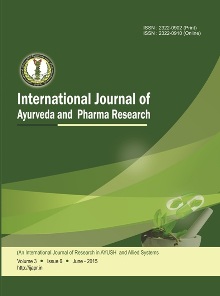Ayurvedic Management of Asthenozoospermia
Abstract
Infertility is a problem of global population and is defined as the inability to conceive even after one year of unprotected coitus. It affects about 10-15% couples and male factor is directly responsible in about 30-40% cases. Asthenozoospermia is a common cause of male infertility and is characterized by reduced sperm motility. The prevalence is 18.71% for asthenozoospremia and 63.13% for asthenozoospermia associated with Oligo-and/or teratozoospermia. According to WHO criteria 2021, asthenozoospermia is diagnosed when total motility is less than 42% or (Progressive and Non progressive) or progressive motility less than 30%. Ayurveda classics have elaborately explained about the causes of male infertility and more focus is given to the pathological conditions of Sukra along with its management, these are included under the concept of Ashta sukradushti. Grandhisukradushti caused by Kaphavatadoshadushti is one among them in which Sukra will be incapable to combine with the Beeja and it will be slowly progressive in nature thus becomes inefficient in the formation of Garbha, hence treatment aims at pacifying Kaphavatadosha. While analysing the clinical features, the condition Asthenozoospermia can be considered under Grandhisukradushti. A 35year old male patient attended the infertility clinic of Govt. Ayurveda College, Thiruvanathapuram, with complaints of primary infertility due to severe asthenozoospermia associated with seminal hyper viscosity since 6 years. The condition was diagnosed as Grandhi sukra dushti. Management focused on Deepana pachana, Kaphavata hara, Srothoshodhana, Vrishya, and Vatanulomana. Treatments given were Takrapana and Snehapana followed by Virechana. On follow up scan, total sperm motility was found to be improved and the patient’s female partner got conceived in the next cycle.

Copyright (c) 2025 International Journal of Ayurveda and Pharma Research

This work is licensed under a Creative Commons Attribution-NonCommercial-ShareAlike 4.0 International License.


